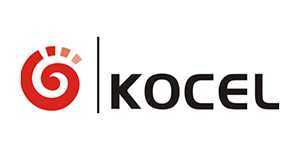 Patterns must be precisely crafted to ensure the dimensional accuracy of the final product Patterns must be precisely crafted to ensure the dimensional accuracy of the final product
Patterns must be precisely crafted to ensure the dimensional accuracy of the final product Patterns must be precisely crafted to ensure the dimensional accuracy of the final product how much does sand casting cost. Complex patterns require skilled craftsmanship and may involve CNC machining, further increasing costs. For small production runs, the cost per unit can be high due to these initial tooling investments.
**5. Labor Costs**
The labor-intensive nature of sand casting contributes to its overall cost. Skilled workers are needed for mold preparation, metal melting, pouring, cooling, and finishing. In countries with higher labor costs, this can significantly escalate the price of sand-cast components. Automation, where implemented, can reduce labor costs but requires substantial capital investment.
**6. Finishing and Machining**
Post-casting operations like grinding, machining, and surface treatments add to the total cost. Parts often require some degree of finishing to achieve the desired tolerances and surface finish, especially for functional components. The extent of required finishing directly affects the final cost.
**7. Production Volume**
Economies of scale apply to sand casting. Larger production runs allow the initial setup costs to be spread over more units, reducing the per-unit cost. Conversely, low-volume productions incur higher costs per part due to the fixed costs associated with pattern making, tooling, and setup.
**Conclusion**
Estimating the cost of sand casting is a nuanced process influenced by a myriad of factors. To obtain an accurate quote, it's essential to provide foundries with detailed specifications regarding the part's material, design complexity, size, and intended production volume. Additionally, considering factors such as lead times and the foundry's experience with similar projects can impact both cost and quality. By understanding these variables and working closely with experienced foundries, manufacturers can make informed decisions that optimize their budgets without compromising on product integrity.
Post time:Jun . 25, 2024 01:55
how much does sand casting cost. Complex patterns require skilled craftsmanship and may involve CNC machining, further increasing costs. For small production runs, the cost per unit can be high due to these initial tooling investments.
**5. Labor Costs**
The labor-intensive nature of sand casting contributes to its overall cost. Skilled workers are needed for mold preparation, metal melting, pouring, cooling, and finishing. In countries with higher labor costs, this can significantly escalate the price of sand-cast components. Automation, where implemented, can reduce labor costs but requires substantial capital investment.
**6. Finishing and Machining**
Post-casting operations like grinding, machining, and surface treatments add to the total cost. Parts often require some degree of finishing to achieve the desired tolerances and surface finish, especially for functional components. The extent of required finishing directly affects the final cost.
**7. Production Volume**
Economies of scale apply to sand casting. Larger production runs allow the initial setup costs to be spread over more units, reducing the per-unit cost. Conversely, low-volume productions incur higher costs per part due to the fixed costs associated with pattern making, tooling, and setup.
**Conclusion**
Estimating the cost of sand casting is a nuanced process influenced by a myriad of factors. To obtain an accurate quote, it's essential to provide foundries with detailed specifications regarding the part's material, design complexity, size, and intended production volume. Additionally, considering factors such as lead times and the foundry's experience with similar projects can impact both cost and quality. By understanding these variables and working closely with experienced foundries, manufacturers can make informed decisions that optimize their budgets without compromising on product integrity.
Post time:Jun . 25, 2024 01:55
Next:Optimizing Sanding Techniques for 3D Printed Surfaces A Comprehensive Guide
